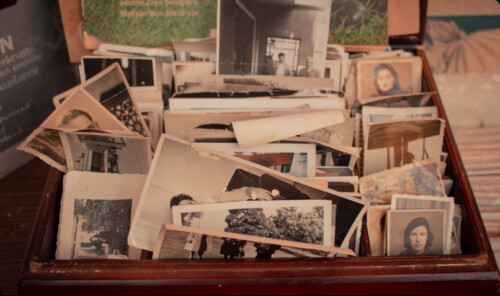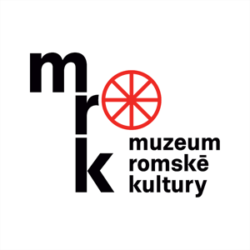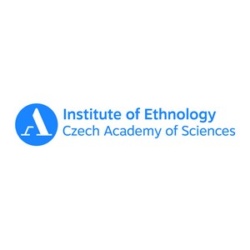About database
This database of Romani and Sinti testimonies is a project of the Prague Forum for Romani Histories, which until 2024 was attached to the Institute of Contemporary History of the Czech Academy of Sciences, and since 2025 has been one of the research centers of the Faculty of Arts of Charles University. The project's partner is the Museum of Romani Culture in Brno. The project was generously supported by the Bader Philanthropies Foundation, the Grant Agency of the Czech Republic (EXPRO No. 19-26638X Genocide, Postwar Migration and Social Mobility: Entangled Experiences of Roma and Jews, led by Kateřina Čapková) and the Academy of Sciences of the Czech Republic (Strategy 21AV, Global Conflicts and Local Contexts).
- Similar projects
- Testimonies included in the database
- Methodological pitfalls in the processing of testimonies
- Structure of the database
- Editorial note on abstracts
- Photographs used
- Support for the project
- Timeline for the project
The experience of the Roma and Sinti during World War II is still a neglected topic, although the consequences of the wartime genocide and persecution are still felt by Roma communities today. Moreover, even in the few publications about the Roma and Sinti Holocaust, the perspective taken from documents written during the war by the state administration and police forces often prevails. On the contrary, the key idea of our project is to convey to the widest possible readership the testimony of the Roma and Sinti themselves and thus their personal and irreplaceable experience of the Second World War. We hope that the Testimonies of Roma and Sinti project will contribute to greater awareness of their genocide and will be an irreplaceable source of information for researchers, relatives of the victims, or anyone else interested in this important topic.
First of all, we defined the project geographically: we focused on the testimonies of Roma and Sinti from the Czech lands (today's Czech Republic) and Slovakia. The second definition is that we are only processing printed testimonies into the database. A valuable, and extremely demanding, part of the database is the detailed abstracts of these testimonies prepared by Romani studies experts in cooperation with historians and linguistic stylists. These abstracts are important not only for Czech and Slovak readers, as many publications with testimonies are not easily accessible, but especially for users from abroad - whether researchers, members of Romani communities or any other interested parties - as the vast majority of the hundreds of published testimonies exist only in Czech, Slovak or Romani, and are thus inaccessible to most people from abroad.
Within the database, the testimonies are analysed according to several criteria, which allow detailed searches and their classification, for example, according to the type of war experience (internment, participation in armed struggle, hiding, etc.). In the analysis, we then focused mainly on geographical data. Therefore, maps are an integral part of the database, which allow us to show the war trajectory of individuals and groups, to show, for example, the locations of mass murders or guerrilla fighting, or to search for testimonies related to a place.
Similar projects
As unique as our project is, and unparalleled in any other region, there are other important projects complementing ours that we would like to highlight here.
First, we would like to recommend Karola Fings' unique project Voices of the Victims (https://www.romarchive.eu/de/v...), which also emphasizes the perspective of Roma women and men. In each case it provides users with just a few documents (mostly letters) by Roma and Sinti from a few selected countries, dating back to World War II or just after it. The documents and their commentaries are available in German, English and Romani.
For Czech speakers, we highly recommend the Paměť Romů (Memory of the Roma) project (https://www.pametromu.cz) by Romea, o. p. s. It presents 43 video recordings of Roma and Sinti from the Czech lands telling their life stories. Six of the interviewees were born before the war, six during the war, and the rest after World War II. The recordings are in Czech, Slovak and Romani.
Video recordings of Roma and Sinti also form part of some collections of Holocaust testimonies which originally focused primarily on documenting the memories of Jewish eyewitnesses. However, some of the institutions that were established specifically to record and make available Jewish testimonies, later initiated and supported the recording and dissemination of Roma and Sinti testimonies as well. In particular, we should mention the significant collection of video recordings of Roma and Sinti - partly from the Czech lands and Slovakia - in the collections of the United States Holocaust Memorial Museum in Washington, D.C. (https://www.ushmm.org). We also recommend highly the Roma testimonies that form part of the USC Shoah Foundation project (https://sfiaccess.usc.edu/Acco...).
Also important are projects relating to individual European countries, such as one about the Roma genocide in Italy (http://porrajmos.it/). This website offers nineteen video interviews with Roma survivors and ten interviews with other witnesses.
Testimonies included in the database
In defining the corpus of testimonies, three conditions were crucial for us in processing them into a database. First, our focus is on testimonies of Roma and Sinti born on the territory of today's Czech and Slovak Republics.
Second, only testimonies of people who experienced the war in person were included. Although we are aware of rare testimonies that are part of family memory, known to us from the mouths of descendants of survivors, only personal testimonies of people born before the war or during the war years are included in the database. We were hesitant about including testimonies of people born during the war, as their experiences were often also based on recollections of their parents. In the end we decided to include them not only because it is impossible to draw a precise dividing line between their own and vicarious experiences, but also because these testimonies often offer the unique perspective of a young child.
Third, only testimonies that have already been published in print were included in the database. In making this decision, we were particularly mindful of copyright and the consent of the survivors to publication of their memoirs. Although we are aware that very valuable information is contained in many other testimonies taken in the form of video or audio recordings by individuals and non-profit organizations, we decided to limit our selection to testimonies published in print. In the case of printed testimonies, especially in book form, it can be assumed that the survivors not only agreed to the publication but also had the opportunity to authorize the text. The abstracts of specific sources explain why the testimonies contained in them were not included in the database (for more on this topic, see the sections on Used Sources used and Other Sources).
Methodological pitfalls in the processing of testimonies
The numerous pitfalls in analysing the testimonies of Roma and Sinti in World War II are similar to those involved in other collections of testimonies. The intelligibility and testimonial value of the interview largely depends on the situation in which the interview was conducted, who conducted it and how, the relationship of trust or mistrust between the interviewer and the witness, the health of the witness at the time, and whether the interviewer could conduct the interview in the interviewee’s mother tongue. In the case of Romani witnesses, these general issues are compounded by the fact that for decades the non-Romani population was not interested in their testimony, and the genocide of Roma and Sinti was not - and often still is not - considered an integral part of the history of a particular region or state. This is also why many Romani survivors tell their wartime experiences in the context of their family history, as the wartime experiences have been passed down within the family from one generation to the next. Moreover, given the significant discrimination against Roma even in the pre- and post-war period, it is evident that in some testimonies the beginning and end of the war do not constitute significant milestones in their narratives.
In the course of our work on the database - and especially when processing the abstracts of the testimonies - we also came to realise how important it is to be familiar with Romani language, history and culture in order to record the information from the witnesses faithfully. The first version of the abstracts is therefore prepared by scholars of Romani studies; in this way, the processing does not distort the testimonies, and the abstracts also respect the importance of the information as presented in the testimonies. This first version of the abstracts then undergoes linguistic and stylistic editing, followed by checking and, if necessary, additions to the text by the historian.
No judgment is made about the truth of the testimony in the abstracts. We try to provide a summary of the testimony, with the emphasis primarily on the wartime experience. If historical events or personalities are mentioned in the testimony, clicking on the link brings up additional information about them. If the historiographical depiction of a historical event differs from how the event is described by a Roma witness, this will be indicated, but the reader will be left to decide how to deal with this information. While it is possible that the witness may have confused the course of the event for various individual reasons (for example, because of the time gap, or because they were very young at the time), it is also possible that the witness experienced or interpreted the event differently from how historians later interpreted it. This is also what makes Romani testimonies unique and rewarding.
Structure of the database
The database of testimonies contains several dozen entries, only some of which appear on the testimony abstract page. Other entries in the database allow for more detailed searches (see Advanced Search). Also, a full text search not only searches the testimony abstracts, but all the data in the database. For example, the database can be searched for a person's name that does not appear in the abstract because that person did not play such an important role in the testimony. However, the database lists all the names that appear in the testimony and the user can find the person in the original text of the testimony.
When you click on the name of the witness whose testimony you are interested in, there is first a short introduction about the witness. In the case of certain witnesses who were prominent personalities, we provide more detailed information about their life and work. Unfortunately, there are few survivors for whom we do not know their year of birth or even their first name.
The core content of the database are detailed abstracts of Romani testimonies. The abstract is divided into three parts: before, during and after the war. Some of the testimonies do not describe the period before or after the war. The abstracts are supplemented by annotations (see Editorial Note to the Abstracts).
In the section Origin of Testimony there are notes by the editor of the testimony on the circumstances of the testimony and also the year it was taken.
Editorial note on abstracts
The abstracts summarize the testimony of the witnesses. Added information is given in square brackets. Where information has been added to the text of the testimony by the editor of the publication in which it appeared, (ed.) is indicated in parentheses at the end of the text or in a footnote. Thus, for example, in the abstract of the testimony of Božena Valdová from the publication Našt'i bisteras we find the sentence, "She went to work with her parents, who were pounding stones into gravel, and says that conditions there were more moderate than subsequently in Auschwitz, where the family was deported in August." The footnote thereafter says: "transport on 22 August 1943 (ed.)". This indicates that the information in the footnote in this case was added to the text by Ctibor Nečas, editor of the publication Našt'i bisteras. Information in square brackets or in a footnote without the mention “(ed.)” was added by one of our team members.
More frequently recurring terms, names or events which we feel require further explanation have been listed in the glossary. Terms, names and events included in the glossary are highlighted in the abstracts so that it is clear that clicking on them will take the reader to the glossary explanation.
Photographs used
We have no photographs of most of the witnesses whose testimonies appear in the database, but it was very important for us to share with the users the faces of at least some of them - and also the faces of several Roma and Sinti who did not survive the war. We are grateful to the Museum of Romani Culture in Brno for providing us with the images. All of the photographs (and many others) were printed by the museum in its flagship publication …to jsou těžké vzpomínky (...these are difficult memories) from 2021, compiled by Jana Horváthová and her team.
For each photograph there is a brief description of the photograph as well as of the wartime experience of the persons depicted.
We are grateful to the Museum of Romani Culture in Brno, which is also our sole partner in the preparation of this important project, for its close long-term cooperation.
Support for the project
Our project would not have been possible without the generous financial support of several foundations. The idea for it emerged from the Excellence Project of the Czech Republic's Grant Agency, number 19-26638X, entitled Genocide, post-war migration and social mobility: entangled experiences of Roma and Jews (project leader: Kateřina Čapková). The work of other members of our team has been generously funded by the Bader Philanthropies Foundation, which is also a major supporter of other activities of the Prague Forum for Romani Histories. We are extremely grateful to the Bader Foundation for their support. Funds from Strategy 21AV's Global Conflicts and Local Contexts programme were also used for additional work on the database.
Timeline for the project
The database of testimonies, which we have been working on since 2019, will be made available in several phases. In the first phase - in 2023 - we are publishing the first hundred processed testimonies. In the second phase, we intend to update the database by processing another hundred testimonies. In the third and final phase, we plan to publish all the remaining processed testimonies, which we estimate to total 250. We expect to conclude the project by the end of 2025. We plan thereafter to add detailed abstracts of testimonies from the neighboring countries.






